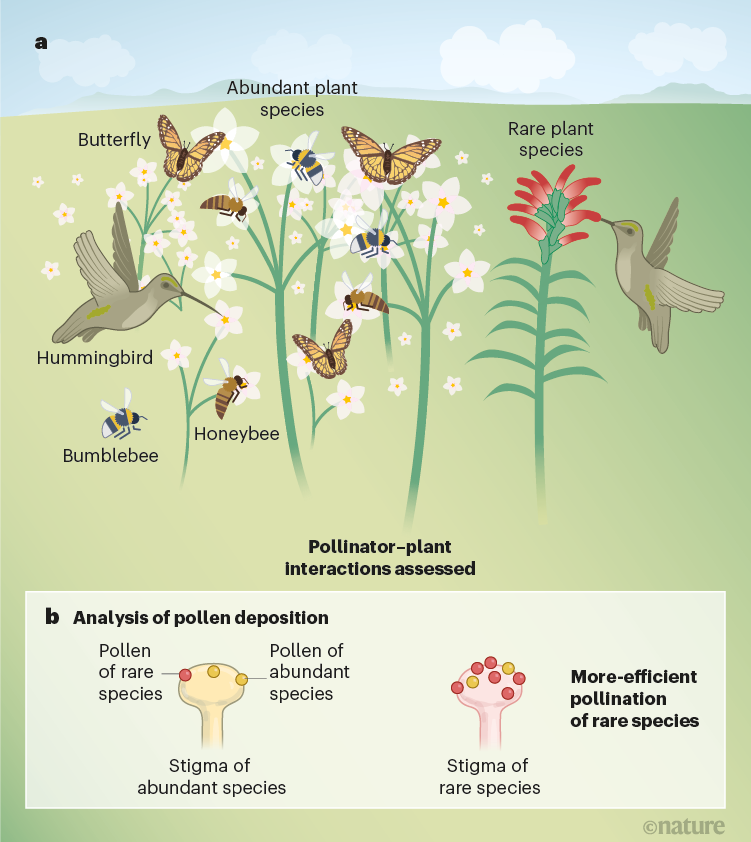
Abstract: "Species diversification results from the balance between the formation of new species (speciation) and the loss of existing ones (extinction). The tremendous proliferation of different life forms on Earth can be attributed to both high rates of speciation and low rates of extinction. Flowering plants — a group called angiosperms — are one of the most diverse groups of non-mobile organism. There are approximately 352,000 plant species, nearly 90% of which depend, to various extents, on insects and other animals for pollination and seed production1. These animal pollinators have been key to the unstoppable diversification of the angiosperms, starting at least 120 million years ago, with pollinators promoting speciation by acting as potent selection agents for a plethora of flower traits2,3. Pollinators also aid species persistence by enabling pollen transfer between relatively distant individuals in sparse plant populations4. Writing in Nature, Wei et al.5 report that, for plant species that flower at the same time, pollinators mediate interactions that might facilitate species coexistence in diverse plant communities."
Read more: https://www.nature.com/articles/d41586-021-02375-z
No comments:
Post a Comment